Abstract
Eleven patients with unilateral diaphragm paralysis of recent onset were studied to investigate the effect of the paralysis on inspiratory muscle function. Nine of the patients had noticed a decrease in exercise tolerance, which was not explained by any other pathological condition. Hemidiaphragm dysfunction was confirmed by the demonstration of a greatly reduced or absent transdiaphragmatic pressure on stimulation of the phrenic nerve in the neck, by means of surface bipolar electrodes (unilateral twitch Pdi), compared with normal values on the contralateral side. Transdiaphragmatic pressure was 44.6% (9.4%) predicted during a maximal sniff and 30.3% (16.8%) predicted during a maximal static inspiration against a closed airway, confirming diaphragm weakness. Maximum static inspiratory mouth pressures were also low (61.7% (12.7%) predicted), consistent with a reduction in inspiratory muscle capacity. Phrenic nerve conduction time was prolonged on the affected side in nine patients, consistent with phrenic nerve dysfunction, whereas on the unaffected side it was normal. It is concluded that recent hemidiaphragm paralysis causes a reduction in transdiaphragmatic pressure that is associated with a reduction in maximum inspiratory mouth pressure. Phrenic nerve stimulation is a useful technique with which to confirm and quantify hemidiaphragm dysfunction. Measurement of phrenic nerve conduction time provides useful information about the underlying pathology.
Full text
PDF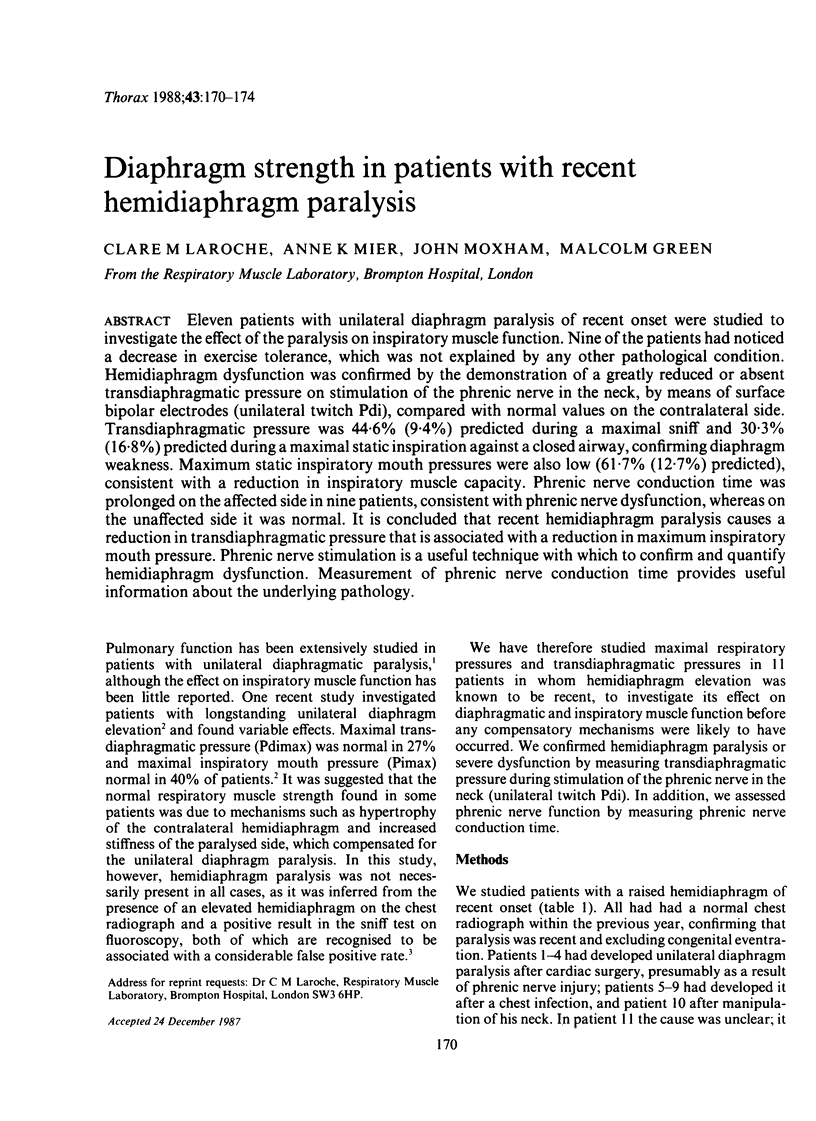
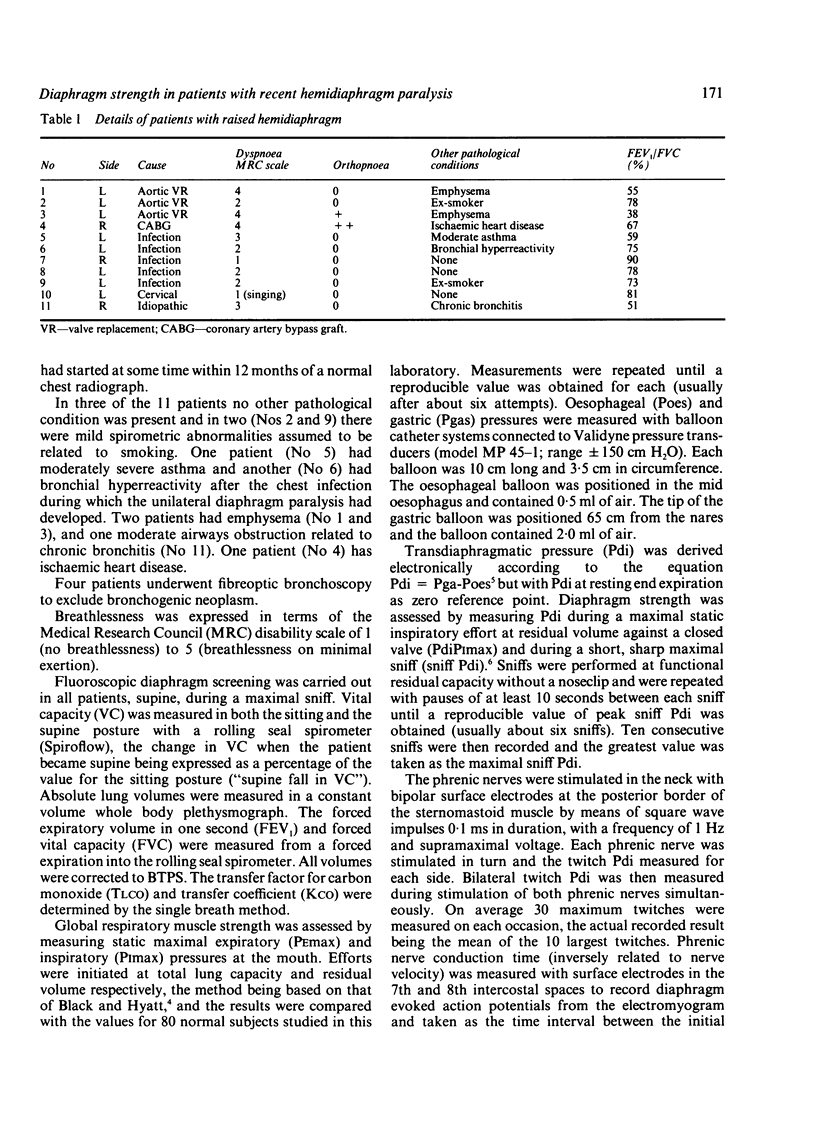
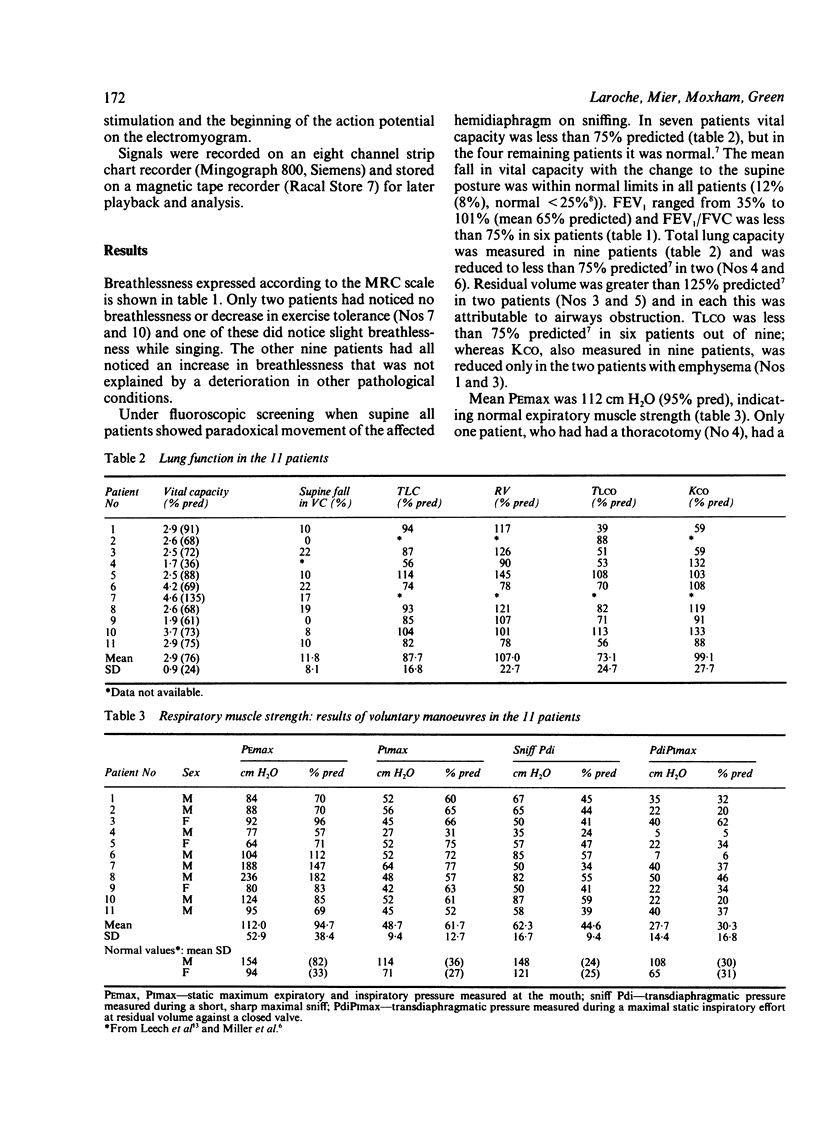
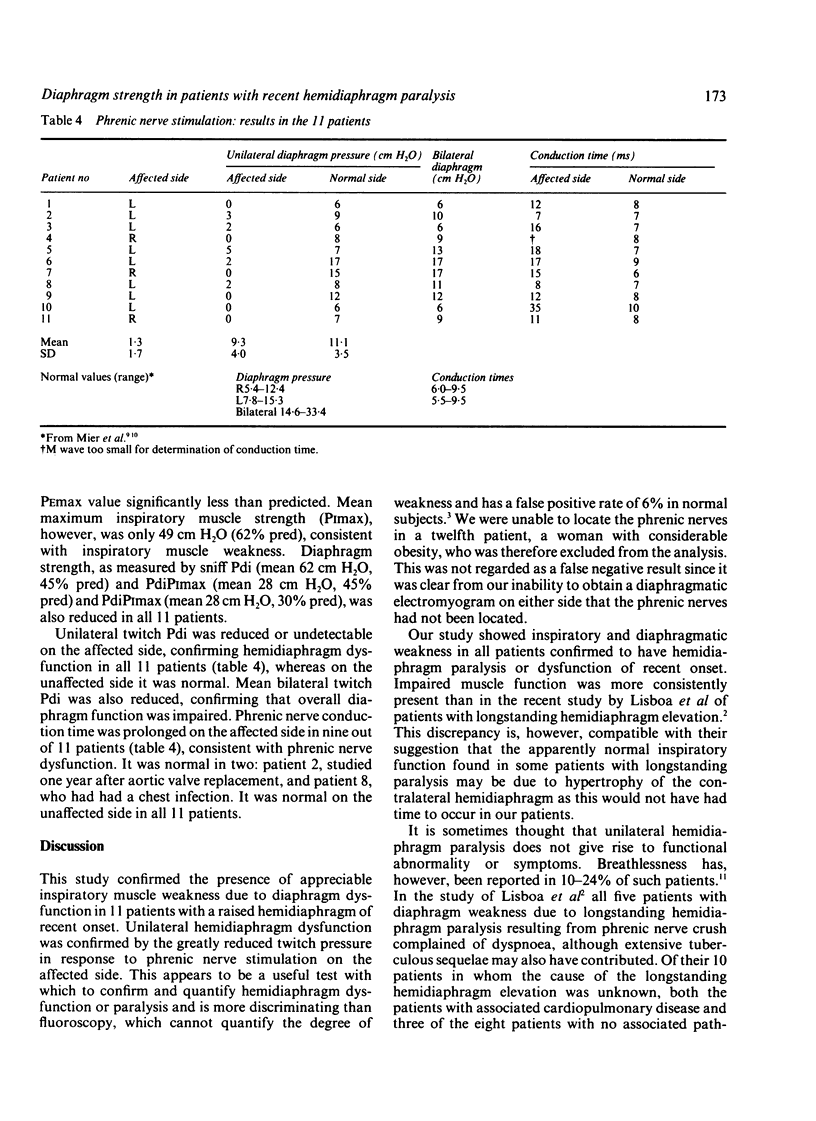
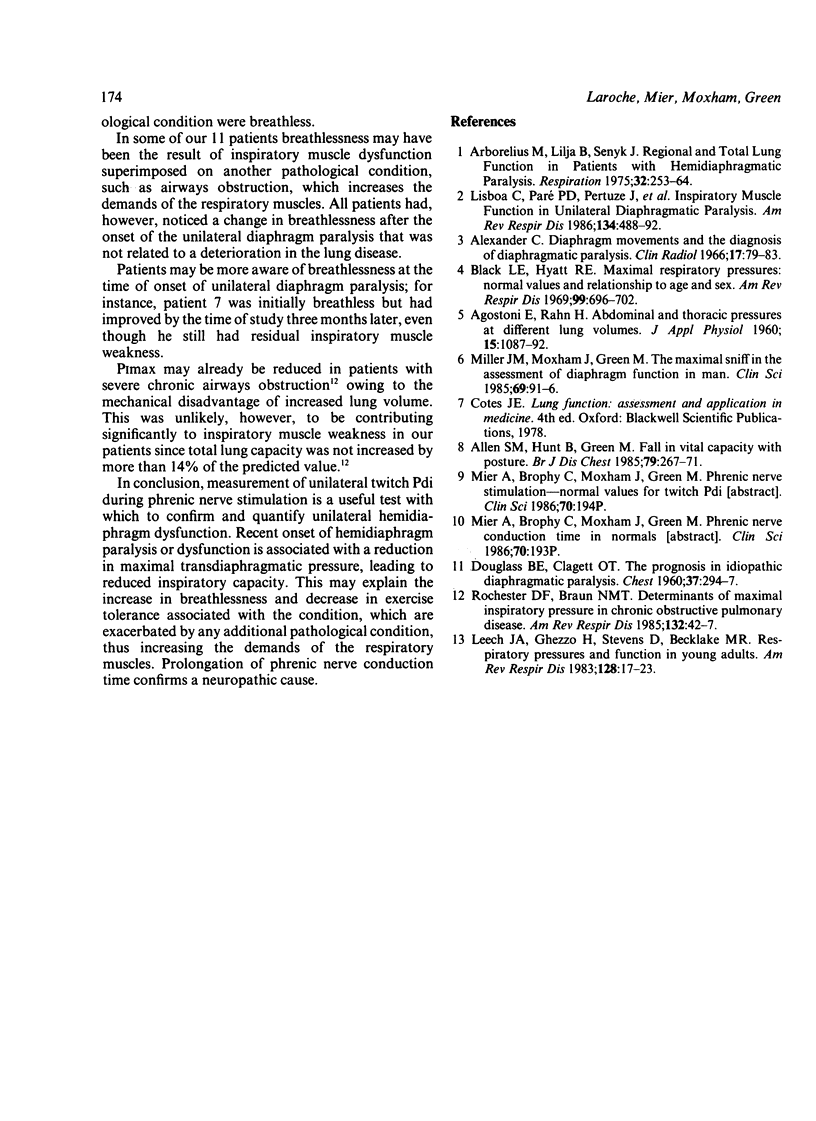
Selected References
These references are in PubMed. This may not be the complete list of references from this article.
- AGOSTONI E., RAHN H. Abdominal and thoracic pressures at different lung volumes. J Appl Physiol. 1960 Nov;15:1087–1092. doi: 10.1152/jappl.1960.15.6.1087. [DOI] [PubMed] [Google Scholar]
- Alexander C. Diaphragm movements and the diagnosis of diaphragmatic paralysis. Clin Radiol. 1966 Jan;17(1):79–83. doi: 10.1016/s0009-9260(66)80128-9. [DOI] [PubMed] [Google Scholar]
- Allen S. M., Hunt B., Green M. Fall in vital capacity with posture. Br J Dis Chest. 1985 Jul;79(3):267–271. [PubMed] [Google Scholar]
- Arborelius M., Jr, Lilja B., Senyk J. Regional and total lung function studies in patients with hemidiaphragmatic paralysis. Respiration. 1975;32(4):253–264. doi: 10.1159/000193656. [DOI] [PubMed] [Google Scholar]
- Black L. F., Hyatt R. E. Maximal respiratory pressures: normal values and relationship to age and sex. Am Rev Respir Dis. 1969 May;99(5):696–702. doi: 10.1164/arrd.1969.99.5.696. [DOI] [PubMed] [Google Scholar]
- DOUGLASS B. E., CLAGETT O. T. The prognosis in idiopathic diaphragmatic paralysis. Dis Chest. 1960 Mar;37:294–297. [PubMed] [Google Scholar]
- Leech J. A., Ghezzo H., Stevens D., Becklake M. R. Respiratory pressures and function in young adults. Am Rev Respir Dis. 1983 Jul;128(1):17–23. doi: 10.1164/arrd.1983.128.1.17. [DOI] [PubMed] [Google Scholar]
- Lisboa C., Paré P. D., Pertuzé J., Contreras G., Moreno R., Guillemi S., Cruz E. Inspiratory muscle function in unilateral diaphragmatic paralysis. Am Rev Respir Dis. 1986 Sep;134(3):488–492. doi: 10.1164/arrd.1986.134.3.488. [DOI] [PubMed] [Google Scholar]
- Miller J. M., Moxham J., Green M. The maximal sniff in the assessment of diaphragm function in man. Clin Sci (Lond) 1985 Jul;69(1):91–96. doi: 10.1042/cs0690091. [DOI] [PubMed] [Google Scholar]
- Rochester D. F., Braun N. M. Determinants of maximal inspiratory pressure in chronic obstructive pulmonary disease. Am Rev Respir Dis. 1985 Jul;132(1):42–47. doi: 10.1164/arrd.1985.132.1.42. [DOI] [PubMed] [Google Scholar]


